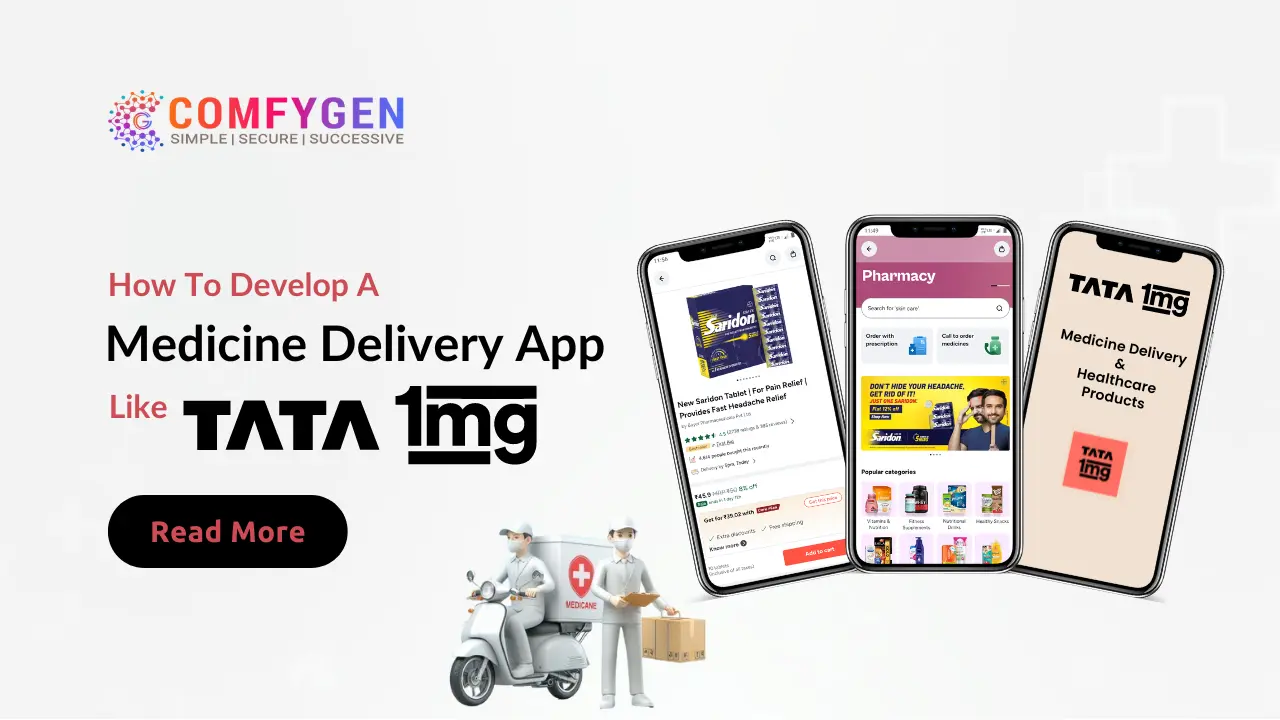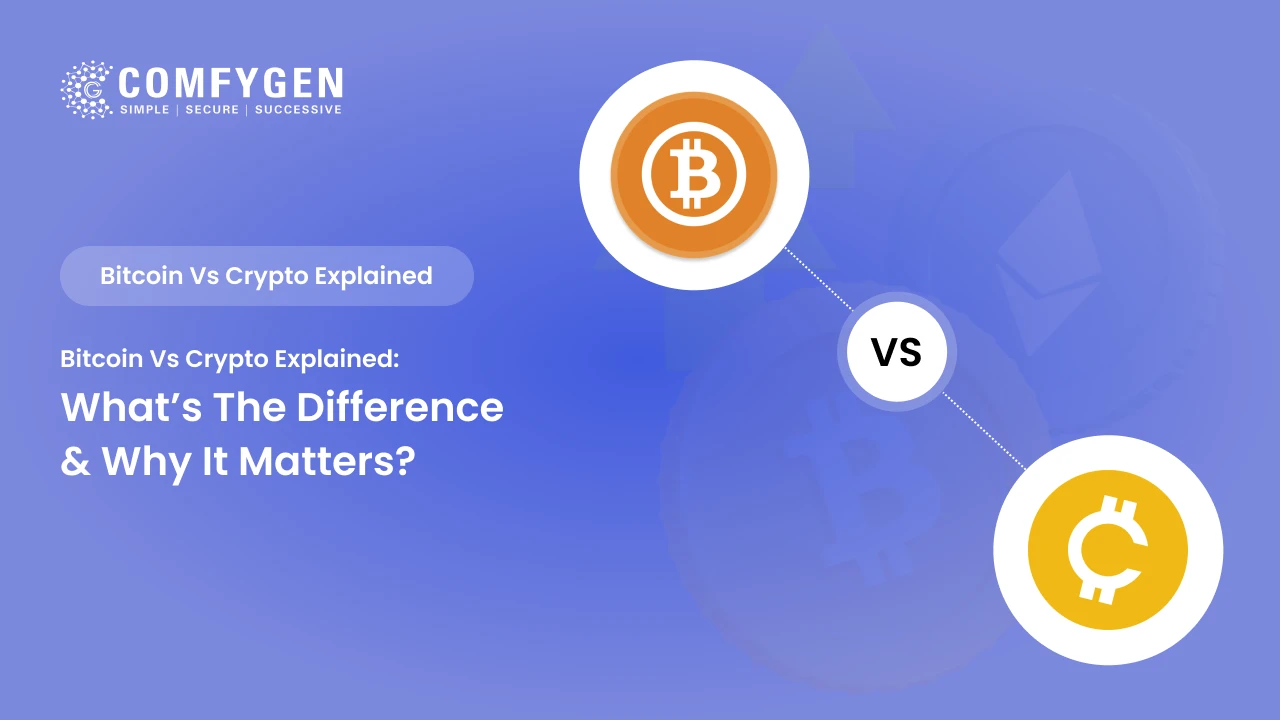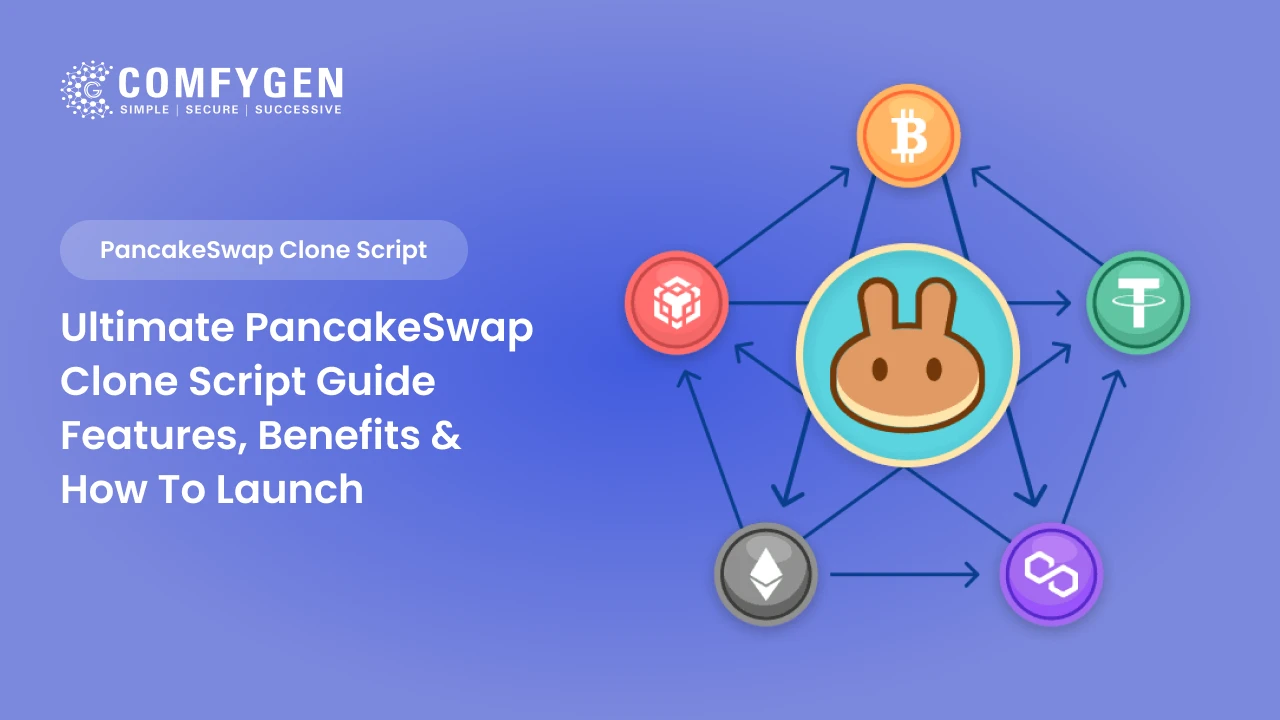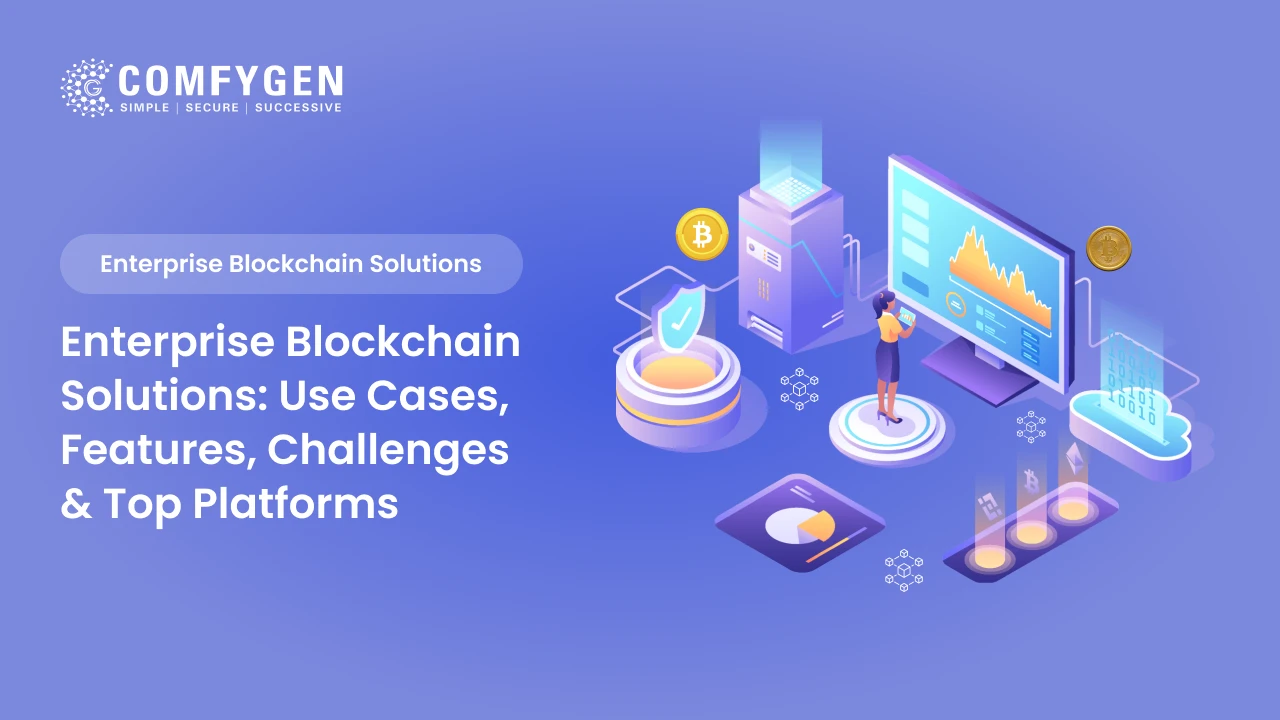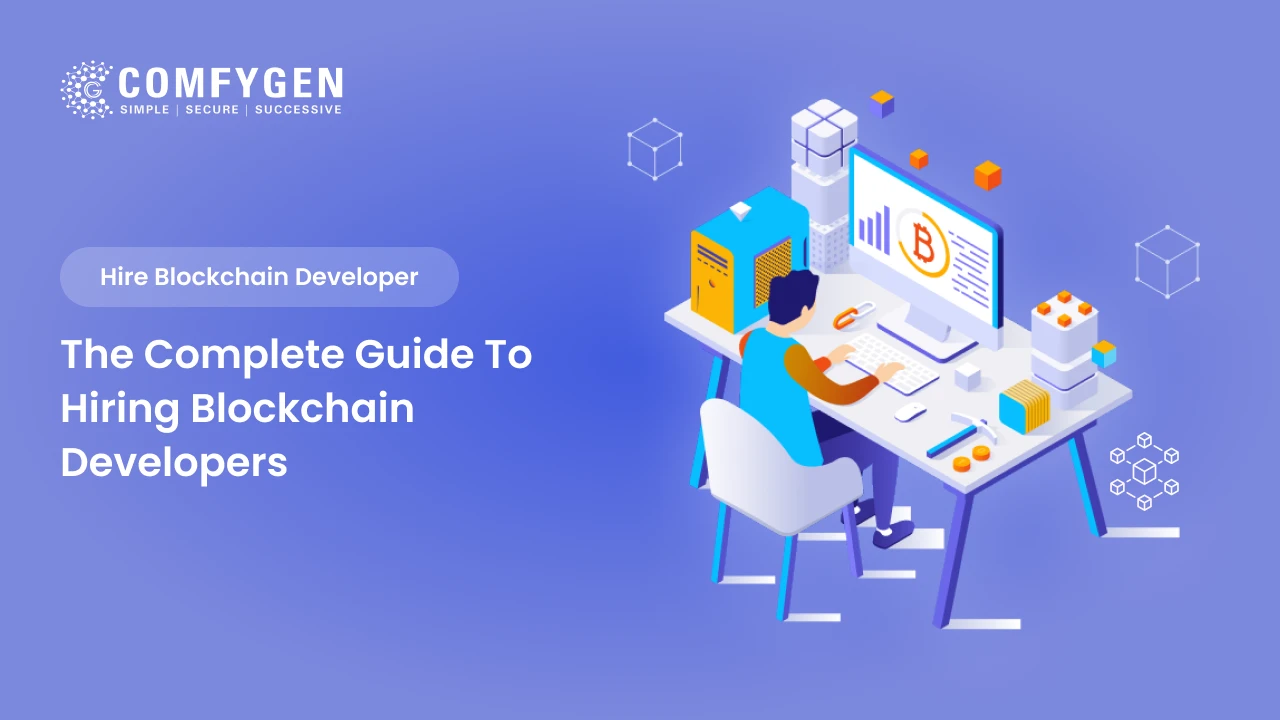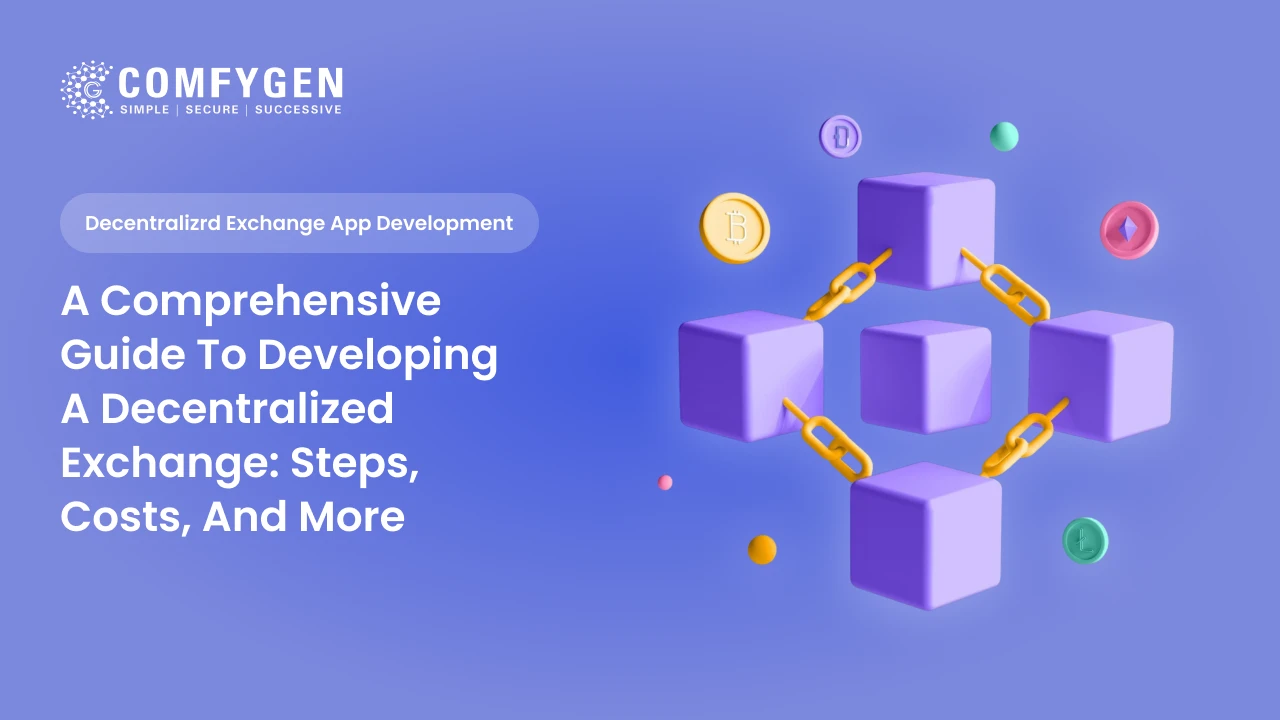How To Develop A Medicine Delivery App Like 1mg In 2024?
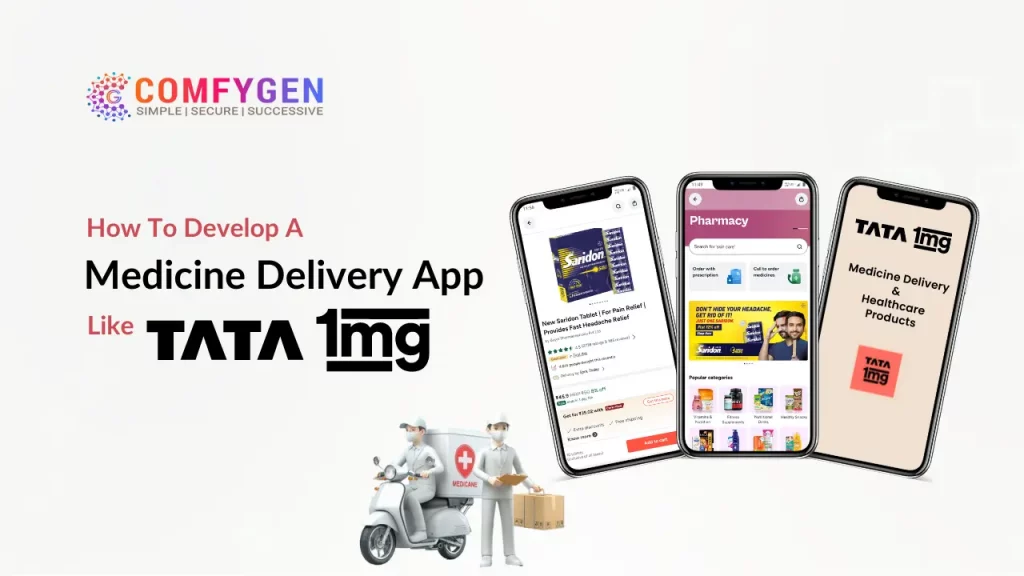
Medications are delivered to patients’ doorsteps through a medicine delivery app, a drastic transformation in the health sector.
Besides making it easy to buy medicines, these pharmacy apps also bring innovations to the industry.
Pharmacy and medical stores really benefit from it. The pharmacy industry is one of the most competitive in the world, with many companies competing to reach the top. They are able to do their service much more easily with the help of the mobile app.
Tata 1mg is one of the top online pharmacy delivery apps in India today. You can now order prescription and over-the-counter medicine from the comfort of your own home.
Do you want to develop a medicine delivery app like Tata 1mg but are curious about its cost, benefits, process and features? The purpose of this blog is to help you in times of need. Mobile applications and software are not only booming in one direction; rather, they will cover multiple vertical industries.
We can order medicines at home, so no dependencies at all even when we are sick. With the high convenience and surging demand, hoping to build a medicine delivery app like 1MG with profits expectations is quite a valuable plan.
For the medicine delivery app development, we have put all the necessary details in this blog. The demonstration will explain about the app’s monetization, services it is offering, how to build a medicine delivery app like 1MG, et cetera.
Let’s dive into the information and know the important detailed images for the medicine delivery app development.
Current Market Stats on Medicine Delivery Industry
- The projected revenue in the online pharmacy market is set to reach US$42.70 Billion by 2024.
- The market is experiencing exponential growth.
- Tata 1MG observed a significant 160% surge in operating revenue during the financial year ending on March 31, 2023.
- The valuation of Tata 1MG rose to 1627 Crores from 627 crores previously.
What Is A Medicine Delivery App?
Medicine delivery apps are becoming increasingly popular among users, primarily because they offer the convenience of having medicines and medical essentials delivered straight to your doorstep with just a few taps on your screen. These pharmaceutical or drug delivery apps saw a significant rise in recognition during the pandemic when many people were unable to visit physical medical or pharmacy stores. The ease of ordering and the safety of home delivery made these apps an essential service during those challenging times, and their popularity has continued to grow ever since. By providing a hassle-free way to access necessary medications, these apps have become a go-to solution for many, ensuring that health needs are met promptly and efficiently without leaving home.
Also Read: How Much Does It Cost To Build A Pharmacy App
Top Benefits Of Medicine Delivery App Development
In the digital age, medicine delivery apps have revolutionized the healthcare industry by providing unparalleled convenience and accessibility. Here are the top benefits of developing a medicine delivery app development services, solution in below:
- Convenience and Accessibility:
One of the most significant advantages of medicine delivery app services is the convenience they offer. Users can order medications from the comfort of their homes with just a few clicks, eliminating the need to travel to a pharmacy. This is particularly beneficial for individuals with mobility issues, busy schedules, or those living in remote areas. The app ensures that essential medications are just a tap away, enhancing accessibility for all.
- 24/7 Availability:
Unlike traditional pharmacies that operate within specific hours, the medicine delivery app development company provides round-the-clock service. This means that users can order medicines anytime, even during late hours or holidays. The 24/7 availability ensures that users never have to worry about running out of their essential medications, thereby improving adherence to prescribed treatments and enhancing overall health outcomes.
- Wide Range of Products:
Medicine delivery apps offer an extensive range of products beyond just prescription medications. Users can also find over-the-counter drugs, health supplements, personal care items, and medical devices. This comprehensive selection makes the app a one-stop solution for all health-related needs, saving users the hassle of visiting multiple stores.
- Enhanced Safety and Privacy:
During the COVID-19 pandemic, the importance of minimizing physical contact became evident. On-demand medicine delivery app development plays a crucial role in reducing exposure to potential health risks by facilitating contactless delivery. Additionally, these apps often include features that allow users to maintain privacy regarding their medical conditions and purchases, ensuring a secure and discreet shopping experience.
- Automated Prescription Refills:
For individuals with chronic conditions requiring regular medication, automated prescription refill services are a game-changer. Medicine delivery apps can be programmed to remind users when their prescriptions are due for a refill and even automatically process the order. This feature reduces the risk of missing doses and helps maintain a consistent treatment regimen, improving health outcomes.
- Cost Savings:
Medicine delivery apps can offer significant cost savings to users. Many apps provide exclusive discounts, offers, and loyalty programs that are not available at brick-and-mortar pharmacies. Additionally, users can easily compare prices across different brands and products, ensuring they get the best deal. The convenience of home delivery also eliminates transportation costs, further enhancing the overall value.
Ready to Build Your Own Medicine Delivery Application?
Features To Implement To Build An App Like 1MG
Building an app like 1MG requires incorporating several key features to ensure a seamless and user-friendly experience. Here are some essential features to include:
- User Registration and Profile Management
- Simple Sign-Up/Log-In: Allow users to register and log in using their email, phone number, or social media accounts.
- Profile Management: Users should be able to easily manage their profiles, including updating personal information and medical history.
- Search and Navigation
- Intuitive Search Bar: Implement a robust search feature that allows users to find medications, doctors, and health services quickly.
- Category Filters: Provide filters for categories like medications, health products, and healthcare services to streamline navigation.
- Medication Information
- Comprehensive Database: Include detailed information on a wide range of medications, including uses, side effects, dosage, and contraindications.
- Substitute Medications: Offer information on generic and alternative medicines.
- Online Consultation
- Doctor Profiles: Feature profiles of available doctors with their qualifications, specialties, and patient reviews.
- Appointment Booking: Enable users to book a doctor appointment for online consultations with doctors.
- Video/Audio Call: Provide options for video and audio consultations.
- E-Pharmacy
- Medicine Orders: Allow users to order prescription and over-the-counter medications online.
- Digital Prescriptions: Users can upload digital prescriptions for easy order placement.
- Order Tracking: Provide real-time order tracking to keep users informed about their delivery status.
- Health and Wellness Content
- Blogs and Articles: Share informative and engaging content on health, wellness, and medical topics.
- Health Tips: Regularly update the app with health tips and advice from medical professionals.
- Lab Test Booking
- Test Catalog: Include a comprehensive list of available lab tests with detailed descriptions.
- Sample Collection: Offer at-home sample collection services for convenience.
- Report Access: Users should be able to view and download their test reports directly from the app.
- Reminders and Notifications
- Medication Reminders: Send reminders for medication timings and refills.
- Appointment Alerts: Notify users about upcoming consultations and appointments.
- Health Tips: Push notifications with health tips and updates.
- Payment Integration
- Multiple Payment Options: Support various payment methods, including credit/debit cards, net banking, and digital wallets.
- Secure Payment Gateway: Ensure a secure and reliable payment process.
- Customer Support
- Live Chat: Provide real-time chat support for user queries and issues.
- Help Center: Include a comprehensive help center with FAQs and support articles.
By incorporating these features, you can create a medicine application that not only mirrors the functionality of 1MG but also provides a comprehensive and user-friendly healthcare experience.
Also Read: Trends And Technologies In Medicine Delivery App Development
Medicine Delivery App Development Process
Developing a medicine delivery app involves several critical steps to ensure a smooth and efficient user experience. Here’s a comprehensive look at the process:
1. Market Research and Planning
Before diving into development, it’s essential to understand the market landscape. This involves:
-
- Identifying Target Audience: Determine who will use your app. Are you targeting urban areas, rural areas, or both?
- Analyzing Competitors: Study existing medicine delivery apps like 1MG, Netmeds, and PharmEasy. Understand their strengths and weaknesses.
- Defining Unique Selling Proposition (USP): Identify what will make your app stand out. This could be faster delivery times, better user interface, or exclusive partnerships with local pharmacies.
2. Requirement Gathering and Analysis
This step involves defining the features and functionalities of the app:
-
- User Stories: Create user stories to understand the user’s perspective. For example, “As a user, I want to be able to search for medicines quickly.”
- Feature List: Compile a list of must-have features such as user registration, medicine search, order placement, payment integration, and delivery tracking.
3. Choosing the Technology Stack
Selecting the right technology stack is crucial for app performance and scalability:
-
- Frontend Development: For the user interface, technologies like React Native development or Flutter development can be used for cross-platform development.
- Backend Development: Use robust backend technologies like Node.js, Ruby on Rails, or Django.
- Database: Opt for scalable databases such as MongoDB, PostgreSQL, or Firebase.
- Cloud Services: Amazon Web Services (AWS), Google Cloud, or Microsoft Azure can be used for hosting and managing the backend infrastructure.
4. Designing the App
An intuitive design is vital for user engagement:
-
- Wireframing: Create wireframes for different screens to map out the user flow and app layout.
- UI/UX Design: Focus on creating a clean and user-friendly interface. Use design tools like Adobe XD, Figma, or Sketch to design the application.
- Prototype Testing: Develop a clickable prototype to test the design and gather user feedback.
5. Development
The development phase is divided into frontend and backend development:
-
- Frontend Development: Implement the user interface based on the designs. Ensure the app is responsive and works seamlessly on different devices.
- Backend Development: Develop the server-side logic, database structures, and APIs to handle user data, orders, and payments.
- Integration: Integrate third-party services such as payment gateways (e.g., Stripe, PayPal), location services (Google Maps API), and SMS/email notifications.
6. Testing
Thorough testing is crucial to ensure the app works flawlessly:
-
- Unit Testing: Test individual components and functionalities.
- Integration Testing: Ensure different parts of the app work together seamlessly.
- User Acceptance Testing (UAT): Conduct testing with real users to gather feedback and identify any issues.
- Performance Testing: Ensure the app performs well under different conditions, including high traffic.
7. Deployment
Once the app is thoroughly tested and refined, it’s time to launch:
-
- App Store Submission: Prepare the app for submission to app stores (Google Play Store and Apple App Store). Ensure all guidelines are followed to avoid rejections.
- Server Setup: Deploy the backend to a reliable cloud service provider.
- Monitoring and Analytics: Implement analytics tools like Google Analytics or Firebase to monitor app performance and user behavior.
8. Post-Launch Activities
Launching the app is just the beginning. Continuous improvement is key:
-
- Gather Feedback: Collect user feedback to identify areas for improvement.
- Regular Updates: Release regular updates to fix bugs, improve performance, and add new features.
- Marketing and Promotion: Promote the app through various channels such as social media, email marketing, and partnerships with healthcare providers.
9. Compliance and Security
Given the sensitive nature of medical information, ensuring compliance and security is paramount:
-
- Data Privacy: Adhere to data privacy laws such as GDPR and HIPAA. Ensure user data is encrypted and stored securely.
- Secure Transactions: Implement secure payment gateways and SSL certificates to protect user transactions.
By following these steps, you can develop similar app like 1 MG is a robust and user-friendly medicine delivery app that meets market needs and provides a seamless experience for users. Continuous iteration based on user feedback and technological advancements will help keep your app competitive and relevant.
Want to Develop Similar App Like 1mg?
Challenges During Medicine Delivery App Development Like 1MG
Developing a medicine delivery app like 1MG comes with its unique set of challenges. Here are some key challenges and how to address them:
1. Regulatory Compliance
Challenge: The pharmaceutical industry is highly regulated. Ensuring that the app complies with various laws and regulations can be complex.
Solution:
- Understand Regulations: Familiarize yourself with local, national, and international regulations related to online medicine sales.
- Hire Experts: Consult legal experts specializing in healthcare and pharmaceutical laws.
- Documentation: Ensure all necessary licenses and approvals are in place before launching the app.
2. Data Security and Privacy
Challenge: Handling sensitive medical data requires robust security measures to protect user privacy.
Solution:
- Encryption: Use end-to-end encryption for data storage and transmission.
- Compliance: Adhere to data protection laws such as GDPR and HIPAA.
- Regular Audits: Conduct regular security audits to identify and fix vulnerabilities.
3. Inventory Management
Challenge: Managing a vast inventory of medications, including availability, expiration dates, and batch tracking, can be daunting.
Solution:
- Automated Systems: Implement an automated inventory management system to track stock levels, expiration dates, and reordering processes.
- Real-Time Updates: Ensure real-time synchronization between the app and the inventory system to avoid discrepancies.
- Supplier Integration: Integrate with suppliers’ systems for efficient stock management and restocking.
4. Delivery Logistics
Challenge: Ensuring timely and accurate delivery of medications is critical for customer satisfaction and safety.
Solution:
- Route Optimization: Use route optimization algorithms to plan the most efficient delivery routes.
- Real-Time Tracking: Implement real-time tracking for deliveries so customers can monitor their orders.
- Partnerships: Collaborate with reliable logistics partners to ensure timely and safe delivery.
5. User Experience and Trust
Challenge: Building a user-friendly interface and gaining user trust are crucial for the app’s success.
Solution:
- Intuitive Design: Invest in a clean, intuitive design to ensure a seamless user experience. Use feedback loops to continuously improve the interface.
- Transparent Information: Provide comprehensive information about medications, including uses, side effects, and reviews, to build trust.
- Customer Support: Offer robust customer support through multiple channels like chat, email, and phone to address user queries and concerns promptly.
By anticipating and addressing these challenges, you can create a reliable and user-friendly medicine delivery app that meets regulatory requirements and provides a seamless experience for users. This not only ensures compliance and security but also builds trust and loyalty among users, which is crucial for the app’s long-term success.
Also Read: The Comprehensive Guide to Healthcare App Development
How Much Does It Cost To Build An App Like 1MG?
Building an app like 1MG involves various costs that can vary widely depending on several factors. Here’s a breakdown of the primary cost components:
Cost Breakdown for Developing a Medicine Delivery App Like 1mg in 2024
Developing a medicine delivery app like 1mg in 2024 involves various stages and factors that influence the overall cost. To help you plan effectively, let’s break down the cost components required to build such an app with essential features, advanced functionalities, and necessary integrations.
Basic Cost Components
1. Platform Selection
The cost of developing a medicine delivery app depends on the platform(s) you choose. Options include iOS, Android, or Web, with each having its associated cost.
- Single platform (iOS or Android): $20,000 – $40,000
- Cross-platform (React Native, Flutter): $30,000 – $60,000
- Web Application: $15,000 – $35,000
2. UI/UX Design
An intuitive and user-friendly interface is key for any medicine delivery app. Design costs vary based on the complexity of the app and whether you opt for custom design or use pre-built templates.
- Basic design (minimal features): $5,000 – $10,000
- Advanced UI/UX with custom design: $10,000 – $20,000
3. User Account and Profiles
Creating user profiles where customers can store prescription history, contact information, and preferred pharmacies is essential for a personalized experience.
- Basic user profiles: $3,000 – $5,000
- Advanced user profiles with saved prescriptions, multi-profile management: $7,000 – $10,000
4. Medicine Catalog Management
The core of a medicine delivery app is a detailed medicine catalog with search filters, product descriptions, and categories. This feature allows users to find the right medicines with ease.
- Basic product catalog: $4,000 – $8,000
- Advanced catalog with filters, search suggestions: $10,000 – $15,000
5. Medicine Delivery Scheduling
The ability for users to schedule deliveries is crucial for customer convenience. This requires a robust delivery management system.
- Basic scheduling and delivery system: $5,000 – $10,000
- Advanced scheduling with time slots, multiple addresses: $12,000 – $18,000
6. Order Management System
An order management system allows users to track their orders in real-time and provides notifications for the order status.
- Basic order management: $3,000 – $6,000
- Advanced order tracking, real-time notifications: $7,000 – $12,000
7. Payment Gateway Integration
Medicine delivery apps require a secure and seamless payment experience. Multiple payment options, such as credit cards, wallets, and UPI, should be integrated.
- Basic payment gateway integration: $3,000 – $7,000
- Advanced integration with multiple options and digital wallets: $8,000 – $12,000
8. Prescription Upload and Management
Enabling users to upload prescriptions for specific medicines adds another layer of functionality to the app.
- Basic prescription upload system: $4,000 – $8,000
- Advanced system with prescription scanning and OCR: $10,000 – $15,000
9. Pharmacy and Vendor Integration
A medicine delivery app must integrate with local pharmacies and vendors to provide real-time inventory and pricing updates.
- Basic vendor integration: $5,000 – $10,000
- Advanced integration with real-time inventory management: $12,000 – $20,000
10. Push Notifications
Push notifications are vital for reminding customers about order status, promotions, or refills.
- Basic push notifications: $1,500 – $3,000
- Advanced notifications with personalized alerts: $3,500 – $5,000
Advanced Cost Components
11. Advanced Features: AI and Personalization
To provide personalized medicine suggestions, AI-driven recommendations based on customer health profiles and purchase history can be implemented.
- AI-based recommendation system: $15,000 – $30,000
12. Telemedicine and Doctor Consultation Integration
Adding telemedicine features where users can consult doctors directly within the app can enhance user experience and engagement.
- Telemedicine integration (basic): $10,000 – $20,000
- Advanced telemedicine with video consultation and prescription generation: $20,000 – $40,000
13. Blockchain for Prescription Security
For enhanced data security and tamper-proof prescription management, integrating blockchain technology can add value to the app.
- Blockchain implementation for prescription security: $25,000 – $50,000
14. Data Analytics and Reporting
Providing insights on customer preferences, order patterns, and delivery times can help optimize the app’s performance.
- Basic analytics: $4,000 – $8,000
- Advanced analytics with detailed reporting dashboards: $10,000 – $20,000
15. HIPAA and GDPR Compliance
To ensure the security of sensitive customer data, especially medical records, the app must comply with regulatory requirements such as HIPAA in the U.S. or GDPR in Europe.
- Compliance with HIPAA/GDPR (basic): $7,000 – $15,000
- Advanced security and compliance measures: $15,000 – $30,000
Maintenance and Post-Launch Costs
16. Hosting and Server Infrastructure
A scalable cloud solution will be needed to store user data, medicine catalogs, and manage app traffic.
- Basic cloud hosting: $500 – $2,000 per month
- Advanced cloud infrastructure with load balancing: $2,000 – $5,000 per month
17. App Maintenance and Updates
Ongoing maintenance is critical for the smooth operation of the app, including bug fixes, feature updates, and security patches.
- Annual maintenance costs: $10,000 – $50,000
18. Customer Support Integration
Including customer support through chatbots, live chat, or call centers ensures users receive assistance when needed.
- Basic customer support integration: $3,000 – $7,000
- Advanced support systems with AI-driven chatbots: $8,000 – $15,000
Total Estimated Costs
| Development Phase | Cost Estimate |
|---|---|
| Basic App (Single Platform) | $30,000 – $70,000 |
| Advanced App (Multi-Platform) | $80,000 – $150,000 |
| Telemedicine Integration | $20,000 – $40,000 |
| AI, Blockchain, Analytics | $30,000 – $80,000 |
| Total Estimated Cost | $80,000 – $300,000 |
Key Cost Drivers for Developing a Medicine Delivery App Like 1mg
- Platform selection: Developing for multiple platforms (iOS, Android, Web) will increase costs significantly.
- Complex features: The more advanced the features (telemedicine, AI, blockchain), the higher the cost.
- Compliance and security: Ensuring compliance with healthcare regulations such as HIPAA will add to the overall development cost.
- Emerging technologies: Implementing AI, machine learning, or blockchain technologies will drive costs higher but add value to your app.
1. Development Team
- App Developers: Hire dedicated mobile app developer is essential. The cost varies based on their location and expertise. On average, developers in North America charge between $100-$150 per hour, while those in Eastern Europe might charge $30-$50 per hour.
- UI/UX Designers: Quality UI/UX design impacts user engagement. Designers typically charge between $50-$150 per hour.
- Backend Developers: Essential for server-side logic, data management, and integration. Costs are similar to app developers.
- Project Managers and QA Testers: To ensure the project is on track and bug-free, expect costs of around $50-$100 per hour for each role.
2. App Features
- Basic Features: User registration, search functionality, and basic inventory management can cost between $10,000-$30,000.
- Advanced Features: Online consultations, secure payment gateways, and real-time tracking significantly increase costs. These can add another $20,000-$50,000.
- Third-Party Integrations: Integrating with services like payment gateways, map services, and notification systems can cost between $5,000-$15,000.
3. Design and User Experience
- Wireframing and Prototyping: Initial designs and prototypes may cost between $5,000-$10,000.
- Final UI/UX Design: Creating a polished user interface can add another $10,000-$20,000.
4. Maintenance and Updates
- Ongoing Costs: Post-launch, expect to spend about 20-30% of the initial development cost annually on maintenance, updates, and support.
5. Additional Costs
- Marketing and Promotion: To attract users, allocate a budget for marketing, which can vary widely but typically starts at around $10,000.
- Legal and Compliance: Ensuring the app complies with regulations might require legal consultations, costing between $5,000-$15,000.
Total Estimate
Overall, medicine delivery app development costs range from $50,000 to $150,000 or more, depending on the complexity, features, and quality of the development team. Regular updates and maintenance costs should also be factored into the long-term budget.
Get An Estimated Cost To Develop a Similar App Like Tata 1mg?
How Comfygen Can Help Build An App Like 1MG
Comfygen specializes in delivering tailored mobile app development solutions and can play a crucial role in building a medicine delivery app like 1MG. Here’s how:
1. Expertise in Healthcare Solutions
Comfygen is a healthcare app development company, that ensures your app meets industry standards and regulations. Their team understands the complexities of healthcare compliance, including data privacy laws like HIPAA.
2. Custom Development
They offer custom mobile application development services to create a unique, user-friendly interface that meets your specific needs. Comfygen’s developers can build both the frontend and backend, ensuring seamless integration and performance.
3. Advanced Features Integration
Comfygen can integrate advanced features such as online consultations, secure payment gateways, and real-time tracking. Their expertise ensures these functionalities are implemented effectively and efficiently.
4. Scalable Solutions
Their scalable solutions ensure that as your user base grows, the app can handle increased traffic and data without compromising performance. This future-proofs your investment and supports long-term growth.
5. Ongoing Support and Maintenance
Post-launch, Comfygen provides continuous support and maintenance, ensuring the app remains up-to-date with the latest technologies and user requirements. Their support includes regular updates, bug fixes, and feature enhancements.
By partnering with Comfygen, you gain access to a dedicated team that will guide you through every step of the development process, ensuring your app is robust, secure, and ready to compete in the market.
Read Also: Estimate The Cost Of Building A Doctor Appointment App Like ZocDoc
How Comfygen Can Help Build a Top-Tier Medicine Delivery App: Examples from Leading Apps
Conclusion
Building an app like 1MG is a complex but rewarding endeavor that requires careful planning, robust features, and expert development. From ensuring regulatory compliance and data security to managing logistics and creating a seamless user experience, each step is crucial.
Discover the features, benefits, and cost of developing an app similar to 1mg by reading on. By understanding the development process and addressing potential challenges, you can create a successful medicine delivery app.
Partnering with a skilled development team like Comfygen can streamline this process, providing the technical expertise and ongoing support needed to bring your vision to life. With the right approach and resources, your app can significantly impact the healthcare industry, offering convenience and reliability to users.
Frequently Asked Questions
What are the key features needed to build an app like 1MG?
How long does it take to develop a medicine delivery app like 1MG?
What are the main challenges in developing a medicine delivery app?
How much does it cost to build a medicine delivery app like 1MG?
Why should I choose Comfygen to develop my medicine delivery app?

Mr. Saddam Husen, (CTO)
Mr. Saddam Husen, CTO at Comfygen, is a renowned Blockchain expert and IT consultant with extensive experience in blockchain development, crypto wallets, DeFi, ICOs, and smart contracts. Passionate about digital transformation, he helps businesses harness blockchain technology’s potential, driving innovation and enhancing IT infrastructure for global success.
Based on Interest
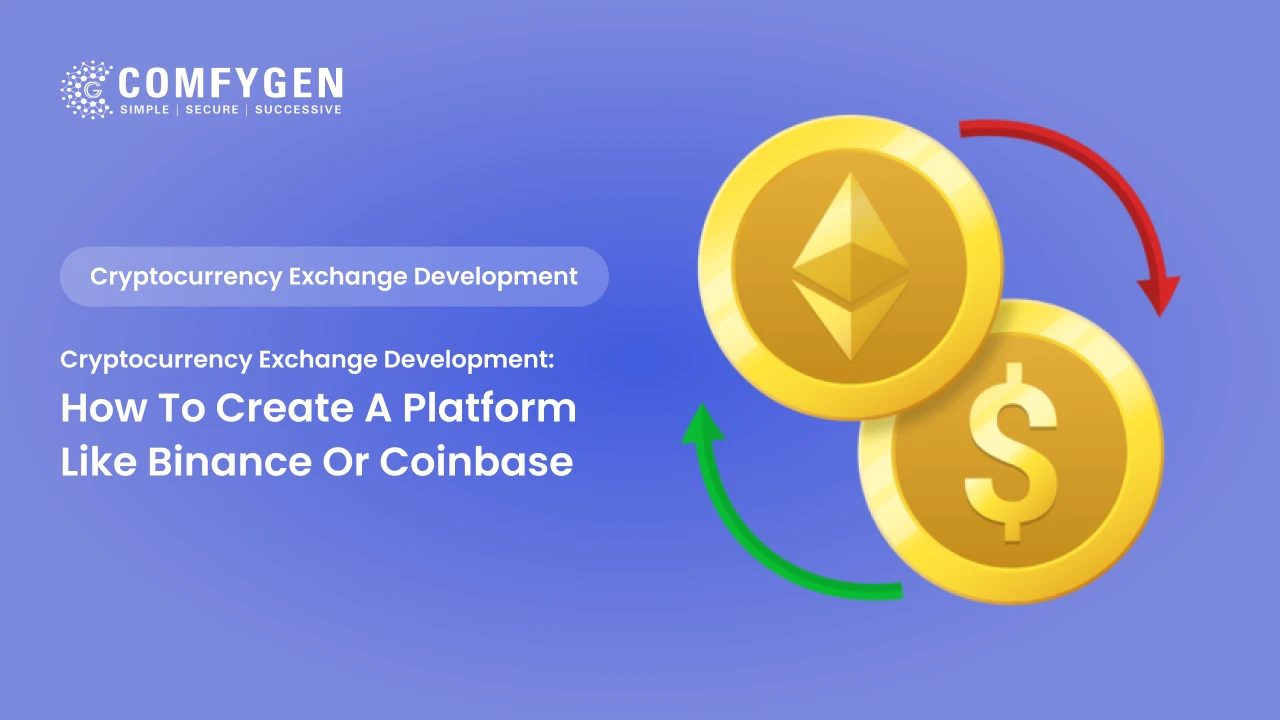
Cryptocurrency Exchange Development: How to Create a Platform Like Binance or Coinbase
The rise of cryptocurrency has revolutionized the financial world, creating new avenues for investment, trading, and technology-driven finance. Among the major…
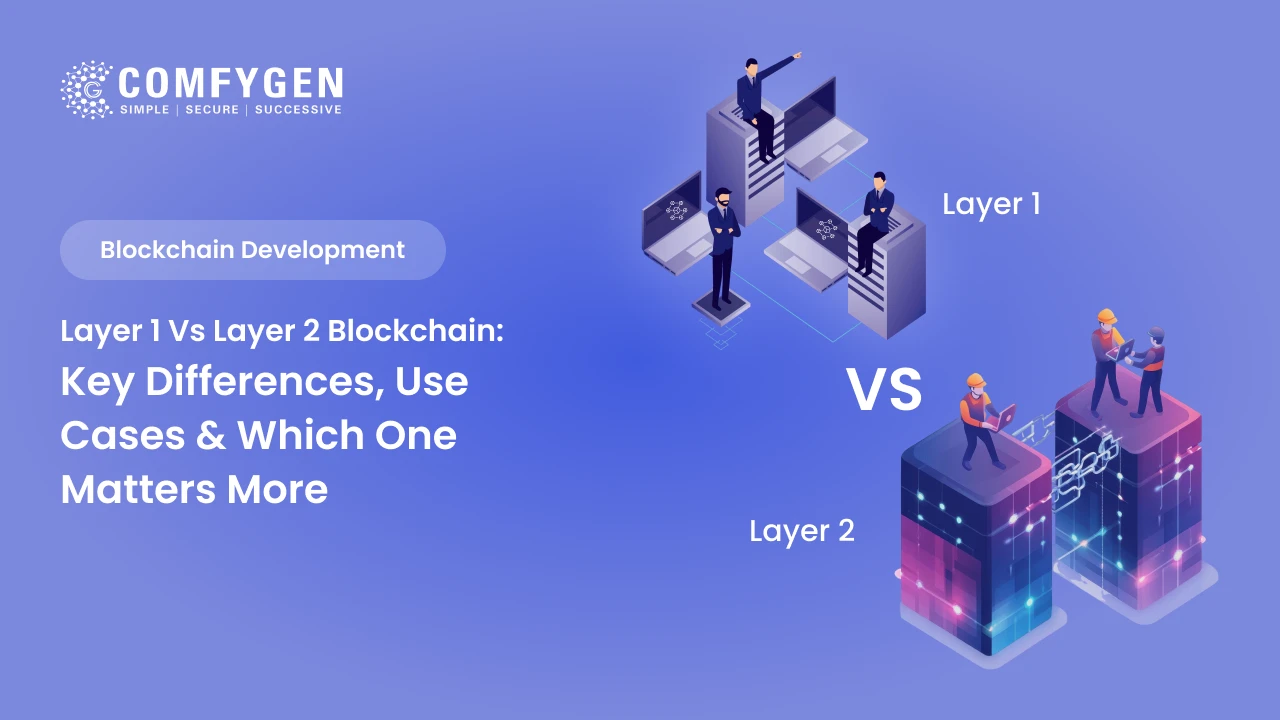
Layer 1 vs Layer 2 Blockchain: Key Differences, Use Cases & Which One Matters More in 2025
Introduction Blockchain technology, once the exclusive domain of cryptocurrencies, has now evolved into a robust tool for various industries, including finance, healthcare,…

